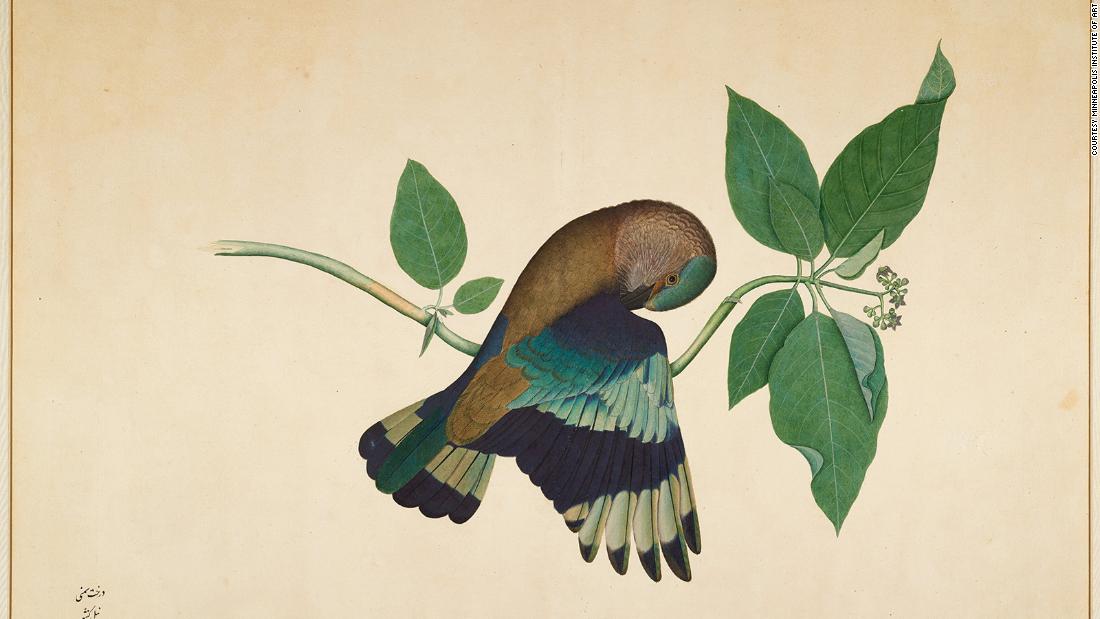
So, it came as a surprise to one of the country’s leading collectors, the textile tycoon and philanthropist Abhishek Poddar, that there was no single source of authoritative information on the subcontinent’s art history.
“I didn’t even realize that India didn’t have an encyclopedia for art. And it was quite shocking that, being one of the oldest cultures in the world, nobody had thought of doing it,” he said over the phone, adding: “Every kid knows about (Michelangelo’s) ‘David,’ the ‘Mona Lisa’ and Botticelli, but there are Indian masterpieces that even 1% of India doesn’t know about.”

The mid-11th century sandstone sculpture, “Celestial dancer (Devata).” Credit: Courtesy the Metropolitan Museum
Funded by Poddar’s Museum of Art & Photography (MAP), which opens later this year in the southern city of Bengaluru, the open-access resource was created by a group of around 20 researchers and editors. Content was internally peer-reviewed and overseen by a panel of expert scholars and writers.
The site is aimed at everyone from students and academics to general-interest readers in India and beyond. Hoping to make the entries as accessible as possible, the researchers focused not only on factual accuracy but using clear and concise language, said the project’s founder and director, Nathaniel Gaskell.

The encyclopedia spotlights a wide range of regional art forms, such as the Pithora painting style used by the Bhil people and artists like Bhuri Bai. Credit: Courtesy Hervé Perdriolle
“A lot of the scholarship is in ridiculously verbose jargon,” he said in a phone interview, calling the encyclopedia “a response to that kind of writing, which people find quite alienating.”
Diverse focus
The research team, which comprises largely of early-career Indian academics, also hoped to redress the various biases — including colonial narratives — that exist in historical arts literature, Gaskell said. This impacted both how the entries are written and what was included in the first place.
“By including regional, non-fine art stuff, we’re immediately starting to address that.”

Religious and mythological art features widely, like this miniature painting illustrating a scene from the “Gita Govinda.” Credit: Courtesy the Cleveland Museum of Art
The initial entries were curated to be representative of the subcontinent’s different religious, linguistic and local traditions, while featuring a broadly equal number of male and female artists. The encyclopedia is also intended to shine a light on the crafts and living traditions of marginalized communities, as well as lesser-studied facets of regional art history — from folk dramas and embroidery to the medieval Indian board game that is known in the US as Chutes and Ladders.
For Poddar, navigating the shortcomings of existing scholarship was primarily about sticking to the facts: “We’re not rewriting history, we are merely writing what’s happened and connecting it in interesting ways.”
Three years in the making, the encyclopedia has initially launched in English, which is widely spoken in India. Organizers hope to translate the entries into Hindi in the near future. The researchers also intend to expand the online repository by around 1,000 entries a year, with a growing focus on the wider region.

Suhag Studio, a photography studio founded in Madhya Pradesh in 1979, is among the arts institutions featured in the MAP Academy Encyclopedia of Art. Credit: Courtesy the Museum of Art and Photography
“We’re talking about things that are as much a part of Pakistan’s or Bangladesh’s history as they are India’s,” Gaskell said, noting that many of the featured topics predate modern borders.
‘This is global art’
Poddar, who donated thousands of items from his personal collection to his soon-to-open museum, believes that education is the best way to secure the sector’s long-term prospects in India.
“If we really want to develop a museum-going culture and make the arts relevant, it needs a basis in education — and one that is accessible and available freely, not just to museum visitors,” he said. “You have to start investing in things that you may or may not even see in the next five or 10 years — it may be a generation later.”

Among the oldest items featured in the encyclopedia are the stamp seals made in the Indus Valley as long ago as 2600 BCE. Credit: Courtesy the Metropolitan Museum
The businessman’s funding of projects like the MAP Academy Encyclopedia of Art is “to some extent” a matter of patriotism, he said.
“I just feel we have such great art,” he added. “And it’s not just for the Indian community in India to see, or the Indian diaspora outside. This is not anybody’s domain — this is global art.”
Top image: “Indian Roller on Sandalwood Branch” (1779) by Sheikh Zain al-Din.